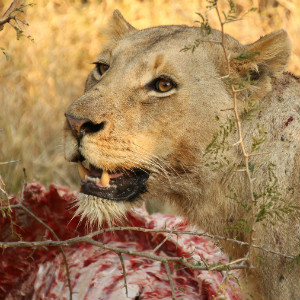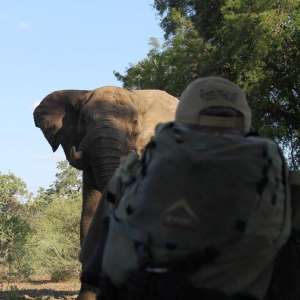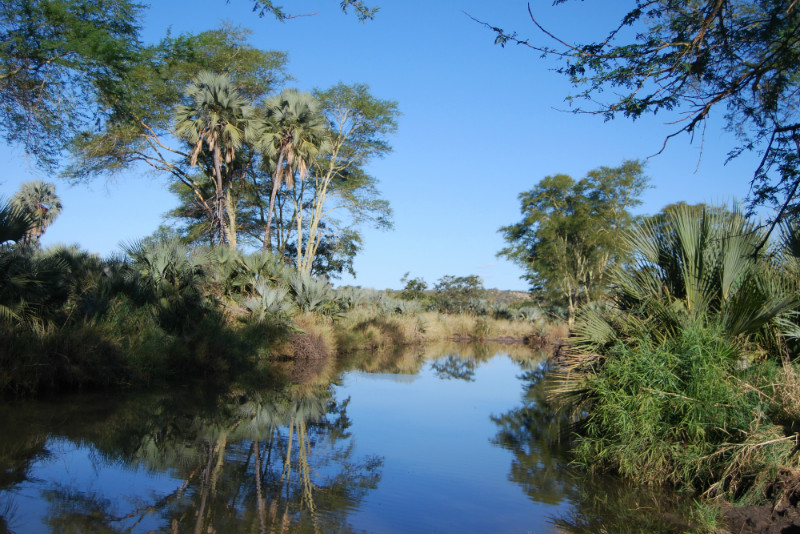 James Bailey reflects on walking trails at a Ramsar site in the remote north of Kruger National Park.
Walking the Fever Tree Forest of the Pafuri region never failed to leave me in wonder of nature. Whilst living in the Makuleke training camp in northern Kruger this would have been a daily occurrence if we didn’t have a day job to do i.e. walking with students and guests in other habitats on the reserve.
When there was a free moment and a spare rifle to be had we jumped at the chance. Two or more of us would head out through the tall Sporobolus grasses of the floodplains and into the magic of the fever trees. We itched for an encounter with lion, leopard, elephant or buffalo.
It wasn’t all about the Big Four. Four not five as professional poachers had done their best to eradicate rhino from the concession. Instead I remember a walk through the Makuleke wetlands being just as much about the small stuff. From the golden dust on the fever trees and the saddle-billed and woolly-necked storks deep in the muddy waters, to the call of the magnificent fish eagle throwing back its head in a manner not befitting of such a regal bird.
Then there were the imposing and beautiful sycamore figs that support such a myriad of life and the Bambi like nyala that tread so carefully through the riparian forest that each of their footsteps registered directly with the first. Then to the insects, the forest was alive with their stridulations, so much so it was reminiscent of the hum of theatre audience before curtain up. And to celebrate it all, the butterfly confetti that erupted at your feet as we followed the elephant trail cutting through the bush.
Makuleke is such a special place because the annual rains cause the Limpopo and Luvuvuh Rivers to come down in flood which in turn creates the wetlands. The former of these rivers is of Rudyard Kipling fame from his book the Elephant Boy which features, “the great grey-green, greasy Limpopo River”.
I’m not the only one that thinks this area is special. On the 22nd May 2007 the Makuleke Wetlands were designated a Ramsar site. Named after a convention held in the Iranian city of the same name in 1971 Ramsar is an intergovernmental treaty for the conservation and wise use of wetlands. It describes, Makuleke, site number 1687 as, “An excellent example of a floodplain vlei type”.
I was so lucky to have access to such a wonderful habitat. The wetlands were literally on our door step. So much so that our tents were set on decks to ensure we were not caught out when heavier than usual rains came. This proximity meant that we had stunning walks on tap that would take us into riverine forests, riparian flood plain forests, flood plain grasslands, river channels and flood pans.
In all there were 31 flood pans in the area, all of which acted as a magnet to wildlife. These pans were depressions in the flood plains which were intermittently filled from floods and rains. As a result they become a refuge point for hippos, elephants, buffalo and antelope as well as a host of other wildlife including a fabulously diverse number of water birds during the dry winter months.
James Bailey reflects on walking trails at a Ramsar site in the remote north of Kruger National Park.
Walking the Fever Tree Forest of the Pafuri region never failed to leave me in wonder of nature. Whilst living in the Makuleke training camp in northern Kruger this would have been a daily occurrence if we didn’t have a day job to do i.e. walking with students and guests in other habitats on the reserve.
When there was a free moment and a spare rifle to be had we jumped at the chance. Two or more of us would head out through the tall Sporobolus grasses of the floodplains and into the magic of the fever trees. We itched for an encounter with lion, leopard, elephant or buffalo.
It wasn’t all about the Big Four. Four not five as professional poachers had done their best to eradicate rhino from the concession. Instead I remember a walk through the Makuleke wetlands being just as much about the small stuff. From the golden dust on the fever trees and the saddle-billed and woolly-necked storks deep in the muddy waters, to the call of the magnificent fish eagle throwing back its head in a manner not befitting of such a regal bird.
Then there were the imposing and beautiful sycamore figs that support such a myriad of life and the Bambi like nyala that tread so carefully through the riparian forest that each of their footsteps registered directly with the first. Then to the insects, the forest was alive with their stridulations, so much so it was reminiscent of the hum of theatre audience before curtain up. And to celebrate it all, the butterfly confetti that erupted at your feet as we followed the elephant trail cutting through the bush.
Makuleke is such a special place because the annual rains cause the Limpopo and Luvuvuh Rivers to come down in flood which in turn creates the wetlands. The former of these rivers is of Rudyard Kipling fame from his book the Elephant Boy which features, “the great grey-green, greasy Limpopo River”.
I’m not the only one that thinks this area is special. On the 22nd May 2007 the Makuleke Wetlands were designated a Ramsar site. Named after a convention held in the Iranian city of the same name in 1971 Ramsar is an intergovernmental treaty for the conservation and wise use of wetlands. It describes, Makuleke, site number 1687 as, “An excellent example of a floodplain vlei type”.
I was so lucky to have access to such a wonderful habitat. The wetlands were literally on our door step. So much so that our tents were set on decks to ensure we were not caught out when heavier than usual rains came. This proximity meant that we had stunning walks on tap that would take us into riverine forests, riparian flood plain forests, flood plain grasslands, river channels and flood pans.
In all there were 31 flood pans in the area, all of which acted as a magnet to wildlife. These pans were depressions in the flood plains which were intermittently filled from floods and rains. As a result they become a refuge point for hippos, elephants, buffalo and antelope as well as a host of other wildlife including a fabulously diverse number of water birds during the dry winter months.
Video about the Makuleke Ramsar wetlands
The Makuleke Wetlands is a Ramsar wetland in the northern region of the Kruger National park, South Africa’s number 1 tourist destination. This sensitive eco region follows the Limpopo river for 43km from Crook’s Corner to the western boundary near the Pafuri entrance gate. The region is not accessible for general visitors to the park. This video provide a glimpse of the natural splendor which can only be seen as a guest of one of the three concession holders. Source: SA RamsarDiscover more
One of the most spectacular elements of the Ramsar wetlands at Makuleke was the Fever Tree forest, learn a more about these magnificent trees on our dedicated fever tree page which includes two very informative videos. A full range of World Wetlands Day support materials for organizers and teachers is available for download on the main World Wetlands Day website. We can use your help in spreading the word. The elephants of Makuleke The Makuleke concessionTAGGED:

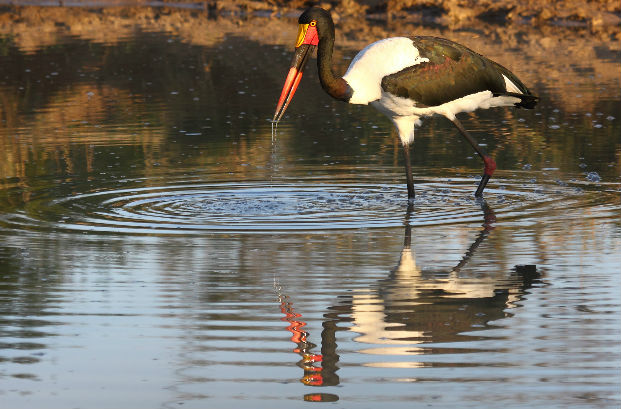
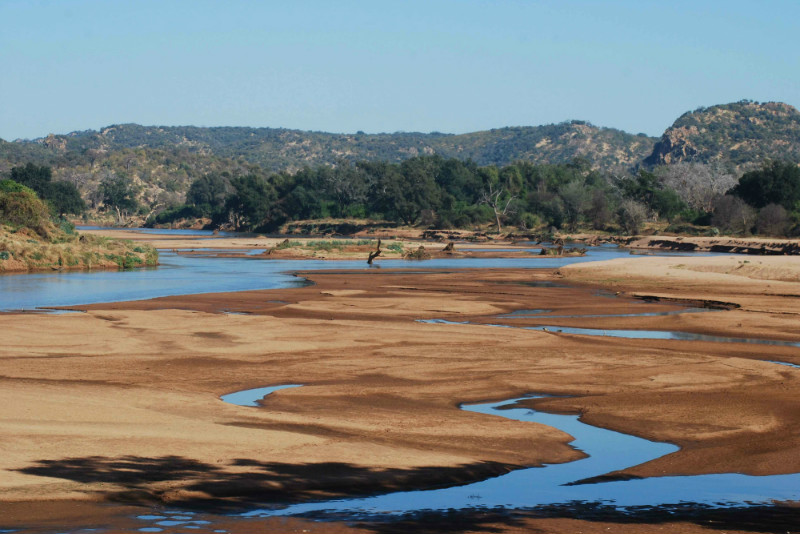
 Previous Post
Previous Post


